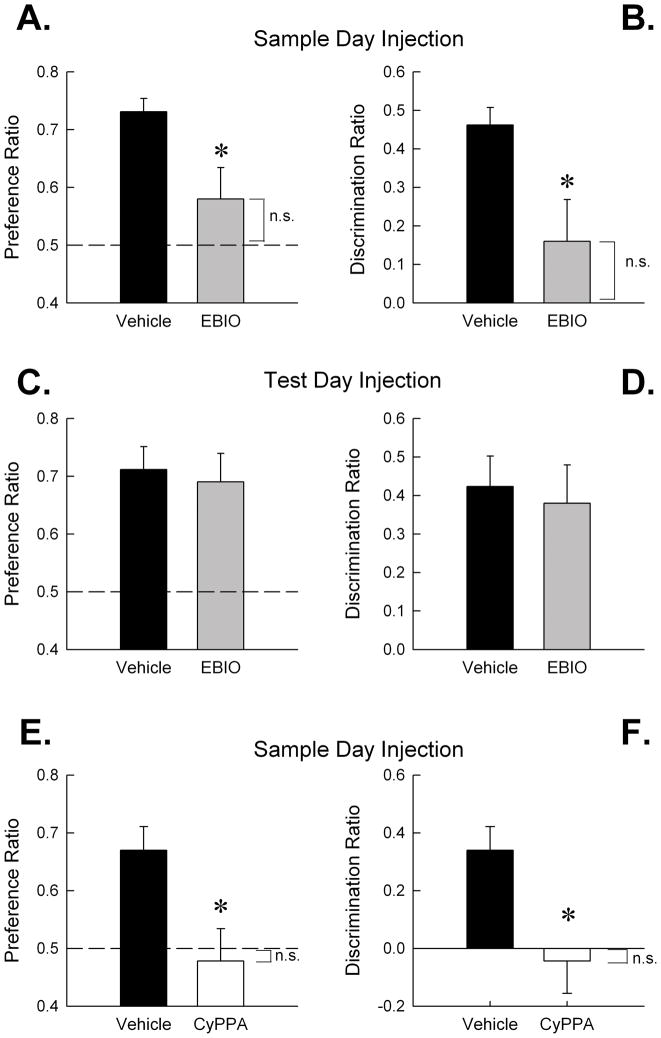Figure 3.
Activation of SK channels with systemic EBIO (17.5 mg/kg) or CyPPA (15 mg/kg) impaired object memory encoding (A) Mice treated with EBIO (n = 10) before the sample session exhibited significantly less novel object preference during the test session 24 h later compared to vehicle-treated mice (n = 12), as measured by the novel object preference ratio; (B) and the discrimination ratio. Both novel object exploration ratios were significantly different from chance for vehicle mice (both P < 0.001), but non-significantly different from chance for EBIO mice (both P > 0.1). (C) A naïve cohort of mice received a vehicle injection before the sample session and then an injection of EBIO (n = 7) or vehicle (n = 8) prior to the test session 24 h later. Vehicle- and EBIO-treated mice exhibited equivalent preference for the novel object as measured by the novel object preference ratio and (D) the discrimination ratio. Both vehicle and EBIO groups demonstrated novel object exploration ratios significantly above chance (all P < 0.01). (E) A final cohort of naïve mice received an injection of CyPPA (n = 8) or 5% Cremophor vehicle (n = 10) before the sample session. CyPPA-treated mice exhibited significantly less novel object preference during the test session as measured by novel object preference ratio; (F) and the discrimination ratio. Both novel object exploration ratios were significantly above chance for the vehicle (both P < 0.01) mice but not significantly different from chance for the CyPPA mice (both P > 0.1). Error bars are SEM. *, P < 0.05, vs. vehicle; n.s., ratio not significant from chance exploration (P > 0.05). Dashed line at 0.5 of A, C and E represents chance performance or a lack of discrimination between the novel and familiar object.

